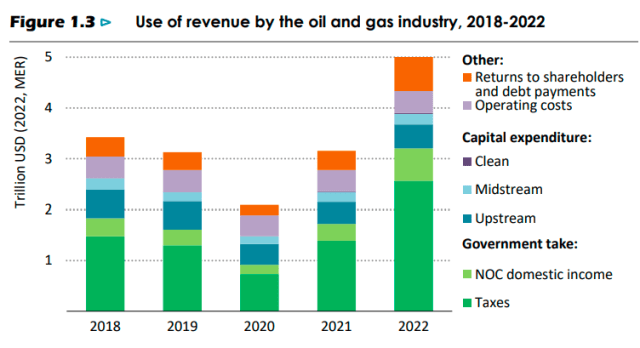A recent report has shed light on the oil and gas industry’s strides toward clean energy, revealing that approximately USD 20 billion was directed toward renewable and sustainable energy projects in 2022.
This amount accounts for roughly 2.5 percent of the industry’s overall capital spending. However, while this investment marks a notable 40 percent surge in global clean energy funding, it remains a mere fraction of what experts suggest is necessary for industry alignment with the Paris Agreement’s goals.
The findings, released by the International Energy Agency (IEA) ahead of the COP28 climate summit in Dubai, underscore the urgency for oil and gas producers to significantly increase their commitment to clean energy. To meet the Paris Agreement targets, the report indicates that these companies should allocate a staggering 50 percent of their capital expenditures toward clean energy projects by 2030. This requirement is in addition to investments essential for curbing emissions from their existing operations.
Fatih Birol, Executive Director of the IEA, emphasized the pivotal crossroads faced by oil and gas entities, stating, “oil and gas producers around the world need to make profound decisions about their future place in the global energy sector. The industry needs to commit to genuinely helping the world meet its energy needs and climate goals.”
Despite the industry’s colossal earnings — averaging close to USD 3.5 trillion annually between 2018 and 2022 — less than 1 percent of this revenue has been directed toward clean energy initiatives. A breakdown of these earnings reveals that approximately half was paid to governments in the form of taxes and royalties, while 10 percent went to shareholders as dividends or buybacks and to reduce debt. The remainder typically covered operational and exploration expenses.
However, projections hint at a challenging path forward. With estimated future spending requirements for oil and gas operations and stakeholders’ apparent reluctance to compromise revenue streams, the outlook for increased investment in clean energy remains uncertain.
In the Net Zero Emissions (NZE) Scenario outlined in the report, it’s suggested that by 2030, if current revenue distribution trends persist, the oil and gas industry might have limited capital available for clean energy projects.
Oil and gas producers account for only 1 percent of total clean energy investment globally. More than 60 percent of this comes from just four companies, out of thousands of producers of oil and gas around the world today. For the moment the oil and gas industry as a whole is a marginal force in the world’s transition to a clean energy system.
The return on capital employed in the oil and gas industry averaged around 6-9 percent between 2010 and 2022, whereas it was 6 percent for clean energy projects. Oil and gas returns varied greatly over time compared with more consistent returns for clean energy projects.
Despite substantial reductions in oil and gas demand and prices in the NZE Scenario, the industry’s financial obligations to shareholders and governments could potentially absorb the majority of its revenue, leaving little to no room for substantial investment in clean energy endeavors.
This forecast underscores the pressing need for transformative action within the oil and gas sector, urging stakeholders to reconsider their financial priorities and embrace a more decisive role in advancing global sustainability efforts. The imminent COP28 summit in Dubai is anticipated to serve as a platform for critical discussions aimed at steering the industry toward a more sustainable and environmentally responsible future.

